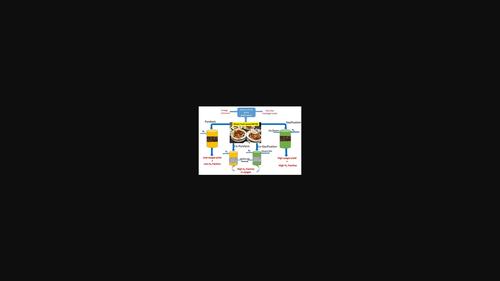当前位置:
X-MOL 学术
›
WIREs Energy Environ.
›
论文详情
Our official English website, www.x-mol.net, welcomes your feedback! (Note: you will need to create a separate account there.)
Syngas production from thermochemical conversion of mixed food waste: A review
Wiley Interdisciplinary Reviews: Energy and Environment ( IF 6.1 ) Pub Date : 2023-01-04 , DOI: 10.1002/wene.468 Sanjeev Yadav 1 , Priyanka Katiyar 1 , Mohammed K. Al Mesfer 2 , Mohd Danish 2
Wiley Interdisciplinary Reviews: Energy and Environment ( IF 6.1 ) Pub Date : 2023-01-04 , DOI: 10.1002/wene.468 Sanjeev Yadav 1 , Priyanka Katiyar 1 , Mohammed K. Al Mesfer 2 , Mohd Danish 2
Affiliation

|
Lately, the generation of leftover food or cooked food waste has turned out to be a critical issue and its disposal in an environmental friendly way has been a challenge. This food waste is being sent for incineration and landfilling which results in a significant contribution to environmental pollution. Therefore, alternative methods for processing food waste in an environmentally benign way have been explored by many researchers. Thermochemical methods are one of those methods and are found to be promising for not only handling the food waste in an ecological way but also producing renewable energy efficiently in the form of bio-oil and syngas along with a solid byproduct, that is, biochar. However, the generation of syngas is favored by only two thermochemical processes, fast pyrolysis, and gasification. Some derived processes such as co-pyrolysis, and co-gasification can also generate syngas. All these processes for syngas generation differ from each other in terms of process conditions (temperature, reaction agents, and residence time) and syngas quality generated (amount of syngas produced, syngas composition, and heating capacity). Additionally, supercritical water gasification is the latest process developed for processing food waste to generate syngas with much higher hydrogen fraction; however, it produces syngas with less yield and involves high operational costs.
中文翻译:

从混合食物垃圾的热化学转化生产合成气:综述
最近,剩余食物或熟食垃圾的产生已成为一个关键问题,以环保方式对其进行处理一直是一项挑战。这些食物垃圾被送去焚烧和填埋,这对环境污染造成了重大影响。因此,许多研究人员探索了以环境友好的方式处理食物垃圾的替代方法。热化学方法是其中一种方法,被发现不仅有望以生态方式处理食物垃圾,而且还能以生物油和合成气的形式有效生产可再生能源以及固体副产品,即生物炭。然而,合成气的产生仅受两种热化学过程的影响,即快速热解和气化。一些衍生过程如共热解和共气化也可以产生合成气。所有这些合成气生产工艺在工艺条件(温度、反应剂和停留时间)和生成的合成气质量(生成的合成气量、合成气组成和热容量)方面各不相同。此外,超临界水气化是最新开发的处理食物垃圾的工艺,可产生氢气含量更高的合成气;然而,它生产的合成气产量较低,并且运营成本高。和加热能力)。此外,超临界水气化是最新开发的处理食物垃圾的工艺,可产生氢气含量更高的合成气;然而,它生产的合成气产量较低,并且运营成本高。和加热能力)。此外,超临界水气化是最新开发的处理食物垃圾的工艺,可产生氢气含量更高的合成气;然而,它生产的合成气产量较低,并且运营成本高。
更新日期:2023-01-04
中文翻译:

从混合食物垃圾的热化学转化生产合成气:综述
最近,剩余食物或熟食垃圾的产生已成为一个关键问题,以环保方式对其进行处理一直是一项挑战。这些食物垃圾被送去焚烧和填埋,这对环境污染造成了重大影响。因此,许多研究人员探索了以环境友好的方式处理食物垃圾的替代方法。热化学方法是其中一种方法,被发现不仅有望以生态方式处理食物垃圾,而且还能以生物油和合成气的形式有效生产可再生能源以及固体副产品,即生物炭。然而,合成气的产生仅受两种热化学过程的影响,即快速热解和气化。一些衍生过程如共热解和共气化也可以产生合成气。所有这些合成气生产工艺在工艺条件(温度、反应剂和停留时间)和生成的合成气质量(生成的合成气量、合成气组成和热容量)方面各不相同。此外,超临界水气化是最新开发的处理食物垃圾的工艺,可产生氢气含量更高的合成气;然而,它生产的合成气产量较低,并且运营成本高。和加热能力)。此外,超临界水气化是最新开发的处理食物垃圾的工艺,可产生氢气含量更高的合成气;然而,它生产的合成气产量较低,并且运营成本高。和加热能力)。此外,超临界水气化是最新开发的处理食物垃圾的工艺,可产生氢气含量更高的合成气;然而,它生产的合成气产量较低,并且运营成本高。



























 京公网安备 11010802027423号
京公网安备 11010802027423号